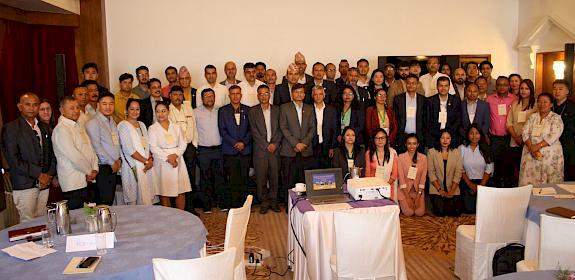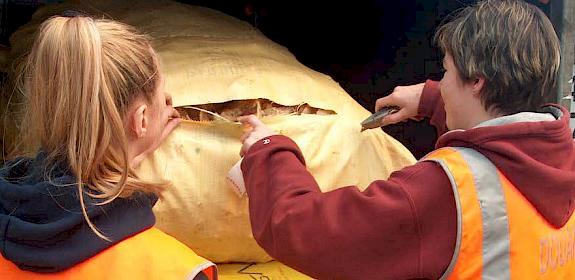Wildlife trade and the Post-2020 Global Biodiversity Framework
As governments and experts meet face-to-face in Geneva for discussions under the Convention on Biological Diversity (CBD), TRAFFIC has submitted a recommendations document concerning the Targets of the Post-2020 Global Biodiversity Framework (GBF), and a proposal for the development of a robust new headline indicator to monitor the implementation of the Target 5.
TRAFFIC Recommendations March 2022 5.0.1 Sustainable Use of Wild Species metadata file
Following meetings in September 2021, TRAFFIC experts join Subsidiary Body on Implementation (SBI), Subsidiary Body on Scientific, Technical and Technological advice (SSBTA), and Open-Ended Working Group (OEWG) meetings, suggesting how to strengthen Post-2020 GBF Targets and how to ensure its implementation.
As we draw ever closer to the adoption of the post-2020 Global Biodiversity Framework, this is a critical time to ensure that these transformative Targets, to address the worrying levels of biodiversity decline, can be effectively implemented by the national and international community.”
TRAFFIC’s Executive Director, Richard Scobey
Safeguarding the sustainable use of wild species can directly combat the threats of unsustainable and/or illegal use, including commercial and international trade. TRAFFIC has proposed a process to develop an indicator for Target 5 to measure the sustainable use of wild species by 2030.
Unlike many other indicators that look at benchmarks on a global scale, this indicator will work from the grassroots up. The concept is to initially collect national data with the potential to aggregate up to a regional or global indicator – making sure all parties are successfully implementing the Target ‘on the ground.’
Several partners have already highlighted their interest to assist the development of this essential indicator framework for Target 5. We look forward to working with Parties to ensure that the indicator developed is meaningful and useful at the national level and that there is adequate resourcing to support the equitable capacity to report data at a national level.”
TRAFFIC’s Director Programmes and Research, Thomasina Oldfield
While TRAFFIC is very encouraged to see that the first draft continues to address the issue of harvesting, trade and use of wild species in Target 5, it is essential for continued work on ensuring this Target is SMART.
TRAFFIC also believes that the word ‘wild’ must also be reinstated in Target 9 and suggests ‘wild’ be added before ‘species’ in the target text.
Millions of people around the world are dependent on the use of wild species for health, nutrition, and livelihoods. It is paramount to ensure the use of wild species is sustainable and equitably benefits all communities involved in harvesting.”
TRAFFIC’s Director of Policy, Sabri Zain
Although there is an intrinsic connection between Target 5 and Target 9 concerning the use of wild species, they serve specific purposes; Target 5 address the threats to biodiversity from illegal and unsustainable use while Target 9 focuses on ensuring benefits to people. Therefore, they should be kept separate and not be merged.
The monitoring and implementation elements of Target 10 concerning Forests need to be strengthened and include reference to tools and approaches developed specifically to address the sustainable production of non-wood products, such as FairWild Standard principles, and to ensure that forestry operations and management plans are inclusive of non-wood products. The lessons learnt from implementing the CBD’s Global Strategy for Plant Conservation 2011-2020 are relevant in this regard.
Targets 14, 15 and 16 are crucial elements of the Framework and will be necessary for these to recognise the contribution of legal and sustainable trade in wildlife (across various taxa) to halting the loss of biodiversity. In relation to sustainable consumption practices, this could include the need for reporting on compliance with responsible trade and production practices; financial institutions divesting investments from activities leading to illegal and unsustainable trade in wildlife and encouraging biodiversity-friendly investments in sustainable production practices; as well as integrating the value of wildlife trade in natural capital accounting and other relevant policies.
Overall, the health of humans, biodiversity, and the planet are intrinsically linked. Therefore, more ambition and coherence is needed around the One Health approach – taking into account the priorities and milestones identified in the Draft Global Action Plan for Biodiversity and Health.
TRAFFIC will work closely with partners and governments worldwide to ensure the effective implementation of the above Targets and others being developed within the Framework. Even more importantly, reviewing the indicators that monitor the progress towards more sustainable use of the natural resources and could, in turn, stop the decline of biodiversity across the globe.




